Introduction1
Contents
New year’s resolutions and goals lists have traditionally been the way we declare our personal goals and aspirations for the year(s) ahead. Mostly this is done in a motivational and ceremonial fashion with no commitment to execution or seeing these goals through. More often than not our approach to executing these personal goals is reactive in nature, such that we only make a strong commitment to execute these goals out of necessity, for example being advised by the doctor to exercise in order to reduce high blood pressure.
On the contrary, we follow a more structured approach to our work goals and career paths at work as we rely on our employer to chart and structure this process. In this article I’m going to present a structured, proactive and visual approach to personal planning as an alternative to the humble goals lists and new year’s resolutions. This approach has worked well for me over the past few years, it has helped me to stay focused on achieving the goals that supported my personal vision. This approach is comprised of the following three phases:
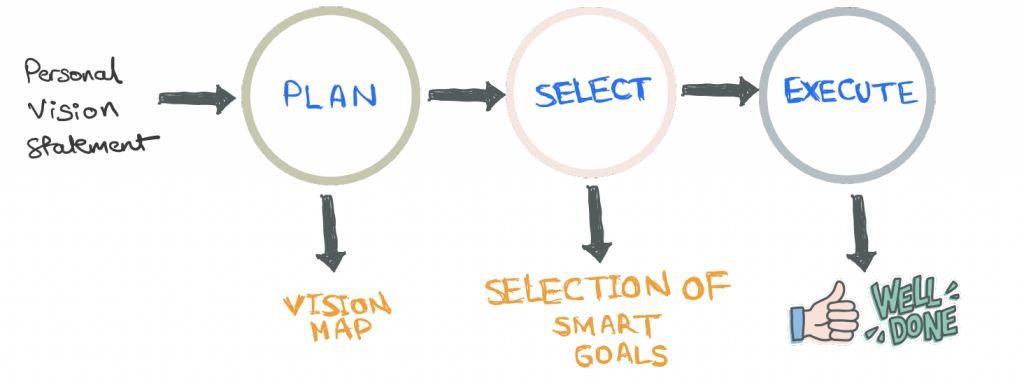
Figure 1. Mapping your journey
- Plan, you start of with a personal vision statement. You then brainstorm all of the goals that can help you achieve this vision and add them to a mind map under the relevant categories, henceforth I refer to this mind map as the “Vision Map” (see Figure 2)
- Select, you then look at each of these goals and try to fine-tune them to make them SMART goals, whatever you can’t make into a SMART goal just park it for later under an “Aspirations” group. Identify which goals are recurrent, e.g. habits and which ones are one-off goals. Then choose the goals you want to target for the month, quarter, year, etc. taking in to consideration your other commitments.
- Execute, you start the execution of your goals by using the right tools, e.g. reminders, planning calendars, etc. Use mental contrasting to help you visualize and overcome any obstacles that stand between you and achieving your goals. At the end ensure to reward yourself for goal achievement.
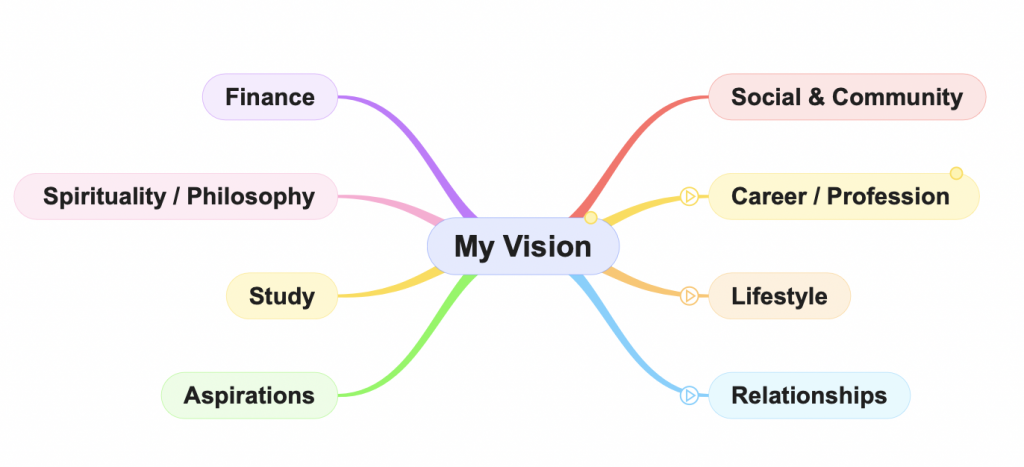
Figure 2. A Vision Map of goal categories
The benefits of a structured, proactive and visual approach
Before I dive into these three steps let me first explain the benefits of adopting a structured, proactive and visual approach to personal goals planning.
Structured
Starting with the first keyword “structured”, adding structure to our goals will help us clearly see them as a journey based on our personal vision, rather than a disconnected list of goals. This vision could be to lead a healthy happy life, to be a devoted parent and partner, to have a successful career, to mention just a few. It’s hard seeing this journey and measuring progress based on a collection of different goal lists that we have created over the years. We can always borrow structure and get inspirations from the various career path planning techniques that we go through with our employers throughout our work experience.
Proactive
“Success in the knowledge economy comes to those who know themselves—their strengths, their values, and how they best perform.”
Peter F. Drucker
The second keyword is “proactive”, as I mentioned previously sometimes our goals are a reaction to a particular situation, for example having to complete a professional certification as a result of loosing a job. Taking more of an explicit and proactive approach helps us to plot our journey in advance and be in a better position to pivot or adjust depending on the current situation.
Peter F. Drucker a renowned management consultant, writer and teacher states in his article Managing Oneself: “Success in the knowledge economy comes to those who know themselves—their strengths, their values, and how they best perform”. Adopting a proactive approach to our personal development and goals planning helps us to better achieve our vision, as Drucker puts it in his book Managing Oneself: “…You must be your own chief executive officer. That means it’s up to you to carve out your place in the world and know when to change course”.
Visual
It’s always said that a picture is worth a thousand words, that is because visuals are more engaging and memorable than text alone. By incorporating images, diagrams, and sketches, people can better retain and recall information, leading to effective communication and better decision-making.
Dan Roam in his book The Back of the Napkin writes: “There is no more powerful way to prove that we know something well than to draw a simple picture of it. And there is no more powerful way to see hidden solutions than to pick up a pen and draw out the pieces of our problem.” Representing our goals visually helps us to better comprehend them and their connections to our bigger journey, it helps us to group and nest these goals, to add images, diagrams and sketches leading to more effective planning and decision making.

Stable Diffusion XL 1.0 (1024): a mindmap of goal icons floating in the sky
My use of visuals for planning goals started back in 2015, the busiest I’ve ever been in my life. In addition to my daytime job and fulfilling other family commitments, I was working on my PhD and developer community activities in the evenings (meetups, etc.). Back then, I felt a great deal was happening in my life that I needed a better way to map all what I was doing and enjoying to a journey of goals that add up to a vision. So I started drawing a simple mind map on the whiteboard to group and nest my goals.
Why a mind map?, I hear you ask. A mind map is a visual representation of information that is organized around a central concept, idea, or theme. It is a diagram that visually depicts the relationships between various concepts, allowing for a more structured and interconnected understanding of a topic. Mind maps are often used for brainstorming, organizing thoughts, problem-solving, and visualizing complex information. I found this mind mapping so effective that I used mind maps to flush out everything I needed to complete for my PhD.
Now I hope you appreciate the value a structured, proactive and visual approach brings to personal goals planning. In the next sections I will explain the three phases of this approach, plan, select and execute.
Plan
Our goals are usually defined based on a higher purpose, a vision that we set to ourselves, this could be to lead a healthy happy life, to be a devoted parent and partner, to have a successful career, to mention just a few. The planning phase is comprised of three steps:
Step 1: Prepare a personal vision statement
The first step in the planning phase is to start with your personal vision statement, here is an elaborate example:
“I envision myself as a devoted husband and father, nurturing loving relationships built on trust, respect, and shared experiences. Within my community, I aspire to be a pillar of support, fostering unity, and contributing to positive social change through acts of kindness and service. In my career, I am committed to continuous growth and innovation, leveraging my skills and experiences to make meaningful contributions, inspire others, and drive positive impact in the world.”
Step 2: Brainstorm all goals
The next step is to think of goals that can help you fulfill this vision statement. Goals can be grouped into categories as shown in the vision map in Figure 3 below, e.g. Relationships, Finance, Lifestyle, etc. At this stage just brainstorm all possible goals you can think of and add them to the vision map. I use SimpleMind because I can access my mind maps on all my Apple devices, but you can use any mind mapping software that you prefer. With SimpleMind you can add notes, icons or images to goals (referred to as topics in SimpleMind) in addition to the ability to cross link them. Goals can be recurring such as regular habits e.g. exercising, healthy diet, etc. or one-off goals such as achieving a particular qualification or certification. Large goals can be decomposed into smaller sub-goals to make them attainable.
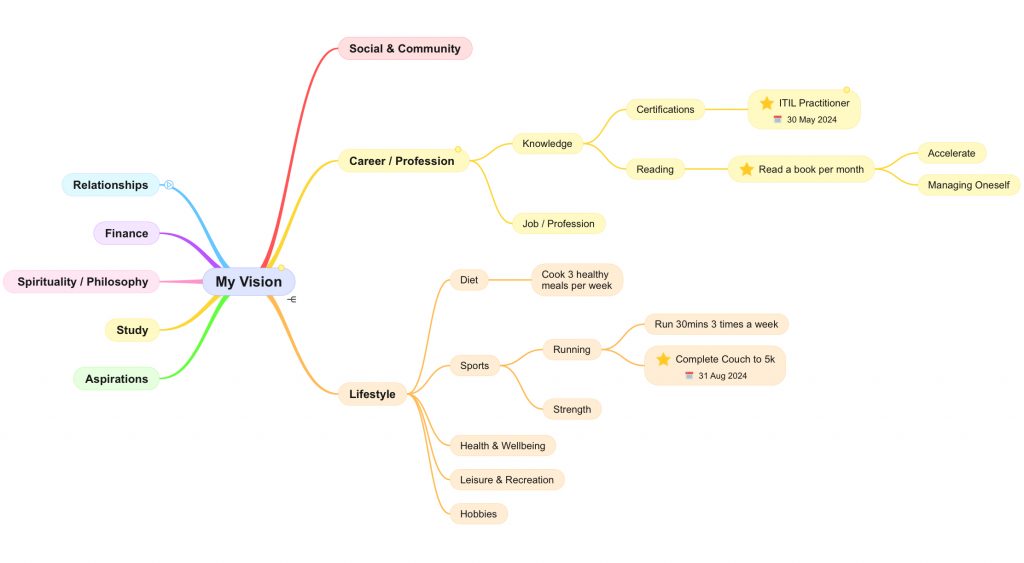
Figure 3. An example Vision Map with some Career and Lifestyle goals
Step 3: Make personal goals SMART
Now that you have created some goals, the final step in the planning phase is to finalize the goals by making them SMART e.g. Specific, Measurable, Achievable, Relevant and Time-bound. Consider the following for your SMART personal goals:
- Specific: Clearly define what you want to achieve. Be specific about the outcome and the actions required. Example: Instead of a vague goal like “Exercise more,” make it specific, such as “Run for 30 minutes three times a week.”
- Measurable: Set criteria to track your progress and measure success. This involves quantifying your goal so that you can assess your achievements. Example: Instead of “Read more books,” specify the target, such as “Read one book per month.”
- Achievable: Ensure that your goal is realistic and attainable. Consider your resources, constraints, and the feasibility of reaching the goal within the given parameters. Example: If you are new to running, an achievable goal might be to “Complete a Couch to 5K race in six months.”
- Relevant: Align your personal goal with your vision statement, values, interests, and broader life objectives. Ensure that the goal is meaningful and contributes to your overall well-being. Example: If your broader life goal is to prioritize health, a relevant goal might be “Cook and eat at least three homemade, healthy meals per week.”
- Time-bound: Set a deadline for achieving your goal. This adds a sense of urgency and helps you stay focused. Example: Instead of “Learn a new language,” make it time-bound, such as “Achieve basic conversational proficiency in Spanish within six months.”
For any goal that feels far fetched, blue-sky or can’t be made SMART at the present moment then move to it to the “Aspirations” category, this will act as a parking lot, giving you the ability to review and refine these goals at a later date and move them back into their categories when you feel the time is right. Below is an example SMART goal for achieving ITIL Practitioner certification in the next 3 months, with a commitment of 10 hours of study per week.
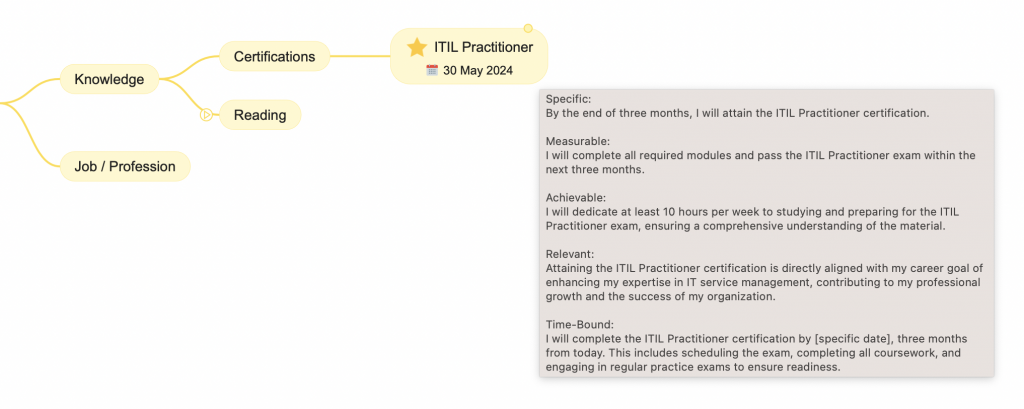
Figure 4. SMART goal for achieving ITIL Practitioner certification
Select
After planning your goals and making them SMART, you move on to the Select phase. During this phase, you select goals to focus on for a predefined period, such as a month, a quarter, or a year. At this stage, it’s best to adopt a balanced and flexible approach to your goals, considering other aspects of your life such as relationships, well-being, and overall happiness. Strive for a balance that contributes positively to your overall quality of life, bearing in mind that life circumstances can change, and it’s okay to adjust your goals accordingly. It’s important to understand that pursuing goals requires time commitment, often leading to tradeoffs and sacrifices due to our limited hours in the day. For example, when I pursued professional certifications, I often had to forgo watching TV to make time for studying.
To highlight the goals I want to focus on for the year ahead, in SimpleMind I usually mark these goals with an icon e.g. a star and add a due date as well. (see Figure 3 & 4 above)
Execute
Planning and listing our goals is the easiest part, in contrast the hardest part is finding the motivation, time and energy to commit to executing these goals. Some of the obstacles that hinder us from achieving our goals include internal factors such as self-doubt, lack of motivation, procrastination, etc. or external factors such as time constraints, or competing priorities. One approach that can help to address this is mental contrasting.
Mental contrasting is a cognitive strategy used to enhance goal pursuit and motivation. It involves contrasting the desired future outcome (the goal) with the current reality (obstacles, challenges, or potential barriers) in a systematic way. Using this technique individuals can gain clarity, motivation, and strategic insights to overcome obstacles and achieve their goals. This technique was developed by psychologist Gabriele Oettingen. Here’s how it works:
- Identify the Goal: Start by clearly defining the specific goal you want to achieve. This could be anything from personal aspirations to professional objectives.
- Visualize the Outcome: Imagine the desired future outcome associated with achieving the goal. Picture yourself successfully accomplishing the goal and the positive consequences that result from it. Engage your senses and emotions to make the visualization vivid and compelling.
- Identify Obstacles: Next, identify potential obstacles, challenges, or barriers that stand in the way of achieving the goal. As mentioned before, these could be internal factors (such as self-doubt, procrastination, or lack of resources) or external factors (such as time constraints or competing priorities).
- Contrast Future with Reality: Contrast the desired future outcome with the current reality by mentally comparing the positive aspects of achieving the goal with the obstacles and challenges that may arise. This contrast highlights the gap between where you want to be and where you currently are.
- Develop Implementation Intentions: Finally, develop specific plans or implementation intentions to overcome the identified obstacles and increase the likelihood of goal attainment. These plans outline the specific actions you will take to address each obstacle as it arises.
Whilst mental contrasting can help you gain clarity, motivation, and strategic insights to overcome obstacles, it’s crucial to start executing your goals, to think big, but to start small. As you achieve your goals, no matter how small, you will discover what motivates and demotivates you, which will help you craft a tailored formula for goals execution. I personally use a yearly calendar which I annotate with important dates, I also use posted notes for reminders, etc. Life circumstances can change, so regularly reflect on your goals, assess your progress, and be willing to adapt them as needed. Personal growth may lead to evolving aspirations, so feel free to adjust your vision map and goals priorities as required (see Figure 5 below).

Figure 5. Adjusting your goals
To keep yourself motivated ensure to recognize and celebrate your achievements along the way, such recognition can greatly boast motivation. I motivate myself with little things like displaying certificates, medals (Figure 6 below), trophies and sharing achievements with friends, family and on Social Media, etc. Some might see sharing achievements as shameless self promotion, however in my opinion, sharing achievements can serve as a form of self-recognition and celebration of one’s hard work and accomplishments. It can be a way to acknowledge personal growth, build confidence, and reinforce motivation to continue striving for success. When done in a humble and genuine manner, sharing achievements can inspire others and foster a positive, supportive community as well.
Figure 6. Getting motivated by displaying my running medals
Summary
In this article we explored a technique for personal goals planning, a technique that is structured, proactive and visual. This technique is centered around a vision map, a customized mind-map used to brainstorm and group all goals that help us to achieve our personal vision. The technique has three phases: plan, select and execute. Since I started using this technique a few years back, it helped me to organize my personal goals and view them as a multi-year journey of personal growth rather than bullet lists of disconnected goals. Below is an example of my current vision map which includes previous goals both completed and abandoned, viewing these previous goals helps me learn about myself, my passions and evolving priorities.
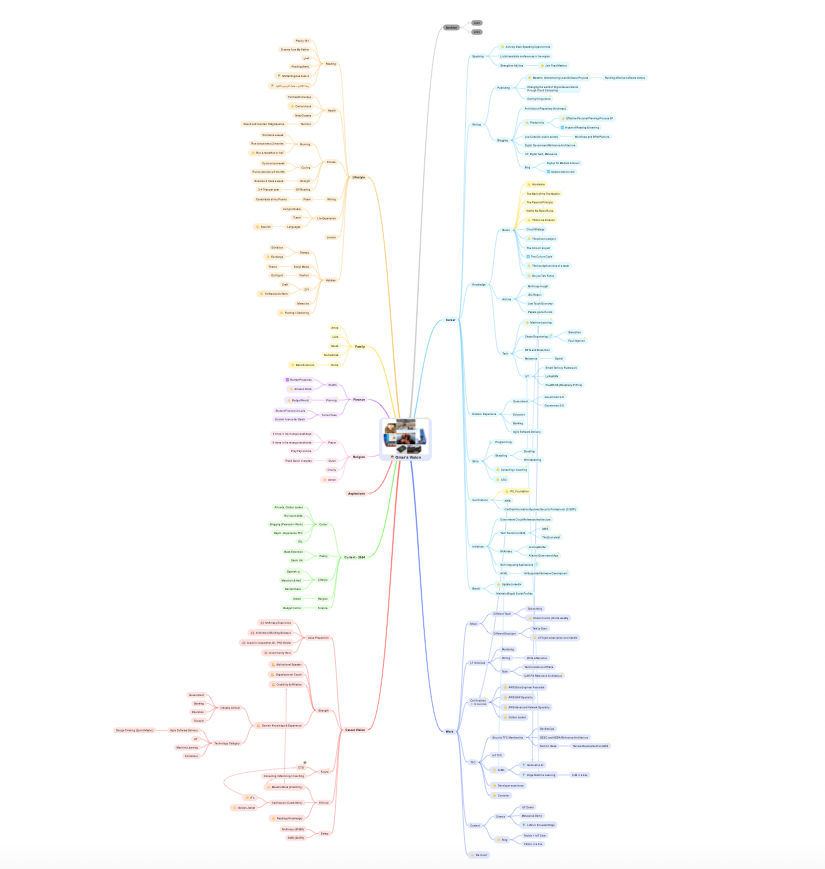
- Blog featured image is created by Stable Diffusion XL 1.0 (1024): prompt “a journey of a lifetime. without text” ↩︎


